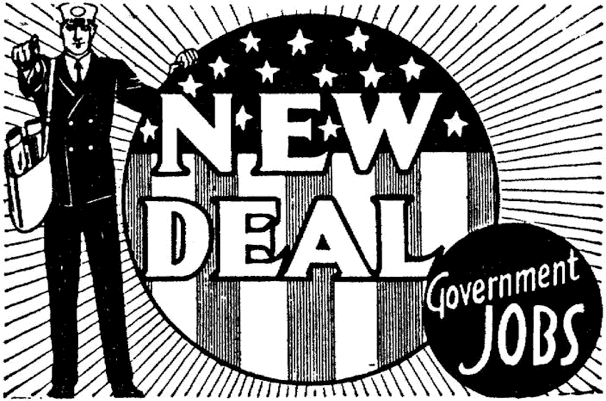
History: What is the New Deal? Part 1: The Emergency Banking Act and FERA (A Short Summary)
- Peacekeeper

- Apr 20, 2021
- 4 min read
Updated: Mar 6, 2024
The New Deal was a series of financial reforms and regulations enacted by Franklin D. Roosevelt between 1933 and 1939.
To understand what the New Deal was and its impact throughout history, we first have to understand the person of Franklin Delano Roosevelt. President Roosevelt was born into an aristocratic family in Hyde Park, New York, on January 30th, 1882. When Franklin was 14 years old, his parents sent him to the Groton School, an exclusive private school that educated the sons of some of the wealthiest and most powerful American families. The school often encouraged its affluent students to pursue careers in politics or other influential positions. Roosevelt later attended Harvard University, where he became romantically involved with his cousin Eleanor Roosevelt, whom he later married.
Roosevelt held a disdain for the business world, despite inheriting considerable wealth and being raised in a privileged family. During his college years, Roosevelt displayed little interest in his coursework, often skipping classes. He barely passed most classes, maintaining an average grade of a "gentleman's C." Reflecting on his college experience, Roosevelt once remarked, “I took economics courses in college for four years, and everything I was taught was wrong." This attitude, coupled with various factors including his upbringing in an elite aristocratic family, attendance at prestigious schools and universities, and his religious beliefs, led him to believe in the importance of a strong central government in creating and maintaining a fair society and economy.
While some may perceive this description of Roosevelt in a less than flattering light, it's essential to note that no defamation of his character is intended. Roosevelt, while caring deeply for the American people, approached governance from an elitist perspective. He believed that the welfare of the people was the responsibility of the ruling class, particularly the president, who, in his view, needed more power to effectively manage the governed population.
In terms of the economy, Roosevelt was heavily influenced by Keynesian economics and integrated aspects of this theory into his economic policies. This economic framework aligned well with his belief in the government's necessary role in the daily lives of U.S. citizens
Now with all this said, let us breakdown the various policies and reforms of the New Deal.

The Emergency Banking Act of 1933
The Emergency Banking Act of 1933 was enacted in response to the banking failures that were common during the Great Depression. The Act itself authorized the President to open and close banks (called banking holidays) depending on their capabilities to meet financial obligations. Prior to this Act, it was risky to possess a savings account with a bank as there did not exist any insurance or any laws dictating how banks could invest their money. This resulted in many banks going bankrupt due to negligent investments, which in turn resulted in a lack of funds available for withdrawal. The Act addressed four common situations faced by banks:
Banks allowed to fully reopen, with over half the banks in the United States at the time allowed to do so.
Banks that were allowed to only return a percentage of their deposits to be withdrawn.
Banks only allowed to accept deposits.
Complete bank closures.
The Act itself was divided into five sections:
The first section empowered the President to close and open banks and regulate all banking functions.
The second section allowed the government to take possession of bank books, records, and assets pending further dispositions.
The third section granted the government the authority to provide financial aid to banks.
The fourth section gave the Federal Reserve the ability to issue emergency currency backed by commercial bank assets.
The fifth section, known as the Glass-Steagall Act, prohibited commercial banks from engaging in investment business and established the Federal Deposit Insurance Corporation (FDIC) to insure bank deposits.
Around this time, Roosevelt also signed Executive Order 6102, which required all citizens to surrender any gold coin, gold bullion, and gold certificates owned by them to the Federal Reserve. This effectively took the U.S. currency off the gold standard and granted the government the power to inflate currency.
Pros: The Act played a vital role in restoring citizens' confidence in the banking system. This was achieved by implementing regulations that protected individuals from negligent banking practices. Additionally, the Act ensured the safety of depositors' savings through the establishment of the Federal Deposit Insurance Corporation (FDIC).
Cons: Despite its positive aspects, the Act and the accompanying executive order signed by Roosevelt contributed to inflation in the American currency. Furthermore, the broad powers granted to the government under the Act led to instances of government overreach. Some citizens found themselves legally unable to withdraw their money due to the extensive control exercised by the government over banks. Additionally, the executive order violated citizens' constitutional rights by confiscating their gold holdings, which were then used by the government to inflate the currency.

Federal Emergency Relief Administration
The Federal Emergency Relief Administration or FERA for short was a bill passed by Roosevelt which built on Herbert Hoover administration's Emergency Relief and Construction Act. The main goal of the bill was to alleviate unemployment by creating new unskilled jobs in local and state government.
FERA provided work for over 20 million people and developed facilities on public lands across the country. This resulted in an artificial decrease of unemployment and further added to national deficit. Furthermore, FERA created many jobs for writers, artists, actors, and musicians which did not contribute infrastructure. Proponents of the bill often argue that the bill was psychologically more beneficial to the unemployed and contributed to higher self esteem.
It is recommended for the reader to further research the many numerous projects created by FERA to examine the failings and success the bill had on various states and cities scattered throughout the United States.
I hope this short summary inspires further and more detailed readings on the New Deal. I hope these simplified articles provide short and digestible explanations to some of our nation's biggest policies and legislations that have been passed over the years.




Comments